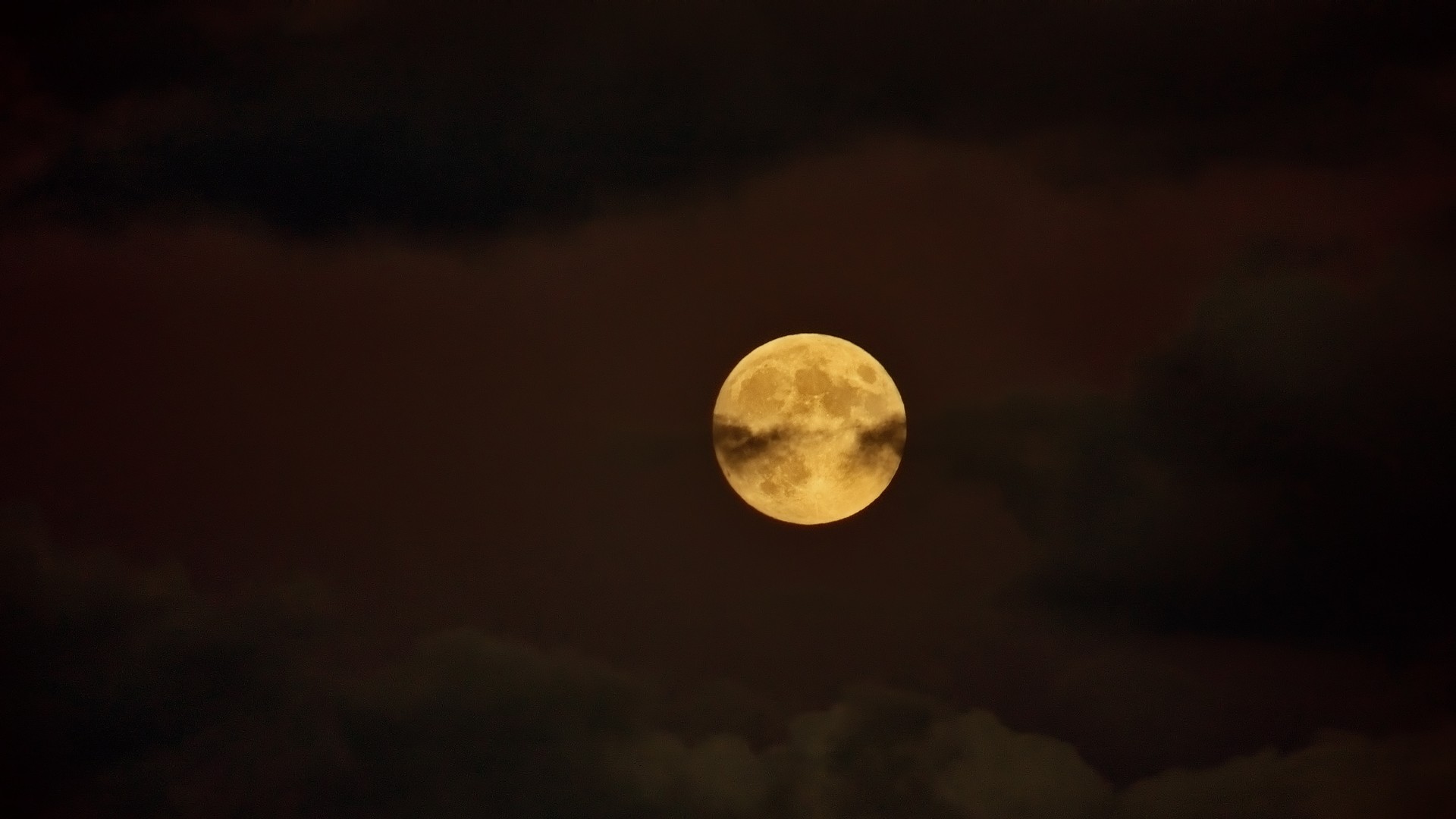See the pumpkin orange Full Hunter's Moon of October 2022 rise tonight! Here's what to expect.
During the Hunter's Moon the moon may appear larger and more orange than usual.

October's full moon, the Hunter's Moon, occurs on Sunday (Oct. 9) when the moon will appear large and orange-hued on the horizon at around sunset.
Skywatchers will be able to see the nearly full moon for several nights before and after the Hunter's Moon — which gets its name from the fact it once signaled a time to hunt in preparation for the coming winter.
The Hunter's Moon is the first full moon to follow the Harvest Moon — which fell on Sept. 10 this year. The Harvest Moon itself is the first full moon after the autumnal equinox that signals the start of fall in the northern hemisphere. This makes the Harvest and Hunter's moons unique as the only full moons that are tied to an astronomical event and can actually happen in different months.
Related: October full moon 2022 guide

Looking for a telescope to observe the full Hunter's Moon? We recommend the Celestron Astro Fi 102 as the top pick in our best beginner's telescope guide.
Though the Hunter's Moon will reach maximum illumination at around 4:54 p.m. EST (2054 GMT) on Sunday, it will still be below the horizon at this time. That means skywatchers will have to wait until sunset to see this full moon.
As the full moon moves above the horizon on Sunday, it may appear larger and more orange, taking on a fitting appearance for the fall season and for the build-up to Halloween. This is the result of something called the 'moon illusion' and the fact it is being viewed close to the horizon.
The orange color comes about because as we look at the full moon close to the horizon, the light that it reflects towards us is passing through more of the Earth's atmosphere than when it is close to overhead.
Get the Space.com Newsletter
Breaking space news, the latest updates on rocket launches, skywatching events and more!
Molecules in Earth's atmosphere are really good at scattering photons of blue light which have shorter wavelengths than red light. This means that blue photons bounce around the sky before hitting our eye — and that's why the sky is blue. Longer wavelength red photons slip right through these molecules and straight to our eye for the most part.
When red photons reflected by the moon have to pass through the thickest part of the atmosphere at the horizon, the chance of them being bounced around is increased.
That's why the moon appears redder when we look at it close to the horizon, but why does it appear larger? This may be more down to how we perceive objects rather than an actual physical effect. According to Farmer's Almanac, when the moon is overhead it is 'dwarfed' by the vast horizon. This has the effect of making it appear smaller.
When the moon appears close to the horizon, however, we compare it to fewer celestial objects (which appear small in the sky) and instead contrast it with earthly things like buildings and trees (which appear larger by comparison). This has the effect of making the moon appear massive.
The moon illusion isn't to be confused with a 'supermoon' which broadly refers to a full moon or new moon that appears somewhat larger in the sky thanks to the fact that the moon is closer to the Earth when it occurs.
The last supermoon of 2022 was the full moon in August — also known as the Sturgeon Moon.
After October's Hunter's Moon, the next full moon is the Beaver Moon which falls on Nov. 8. After this, the final full moon of 2022 is December's aptly titled Cold Moon which happens on Dec. 7.
If you're interested in taking your lunar photography to the next level, our how to photograph the moon guide is full of expert tips on techniques, times and tools to help you start taking the most impressive lunar photos you can. Our best cameras for astrophotography and best lenses for astrophotography can also help you make sure you capture the best moon images you can no matter your skill level.
Follow us on Twitter @Spacedotcom or on Facebook.
Join our Space Forums to keep talking space on the latest missions, night sky and more! And if you have a news tip, correction or comment, let us know at: community@space.com.

Robert Lea is a science journalist in the U.K. whose articles have been published in Physics World, New Scientist, Astronomy Magazine, All About Space, Newsweek and ZME Science. He also writes about science communication for Elsevier and the European Journal of Physics. Rob holds a bachelor of science degree in physics and astronomy from the U.K.’s Open University. Follow him on Twitter @sciencef1rst.









